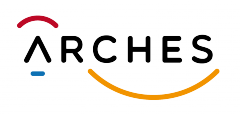ARCHES mentioned in recently published seminal book on Visual Impairment
The ARCHES project is mentioned and described in the chapter “Classical philosophies on blindness and cross-modal transfer, 1688–2003” by Simon Hayhoe, of the seminal publication “The Routledge Handbook of Visual Impairment“, edited by John Ravenscroft, published in March 2019 by Routledge
ISBN 9781138085411 (hardback) |
ISBN 9781315111353 (ebook)
ISBN: 978-1-138-08541-1 (hbk)
ISBN: 978-1-315-11135-3 (ebk)
Table of Contents
1 Introduction and synthesis of themes: the editor’s perspective 1
John Ravenscroft
PART I
Introducing and understanding the profile, sociological and
psychological impact of visual impairment 9
2 Global data on vision loss: implications for services 11
Jill Keeffe
3 Psychological representation of visual impairment: perception and
how visually impaired people “see” the world 18
Jennifer C. Fielder and Michael J. Proulx
4 On being blind 36
Gaylen Kapperman
PART II
Cerebral visual impairment/cerebral visual processing 51
5 Cerebral (cortical) visual impairment in children: a perspective 53
Gordon N. Dutton and Corinna M. Bauer
6 A personal perspective on CVI 70
Nicola McDowell
7 Assessment of visual processing functions and disorders 79
Lea Hyvärinen
PART III
Education 97
8 Trends in low vision education: learning from the past, looking to
the future 99
Amanda Hall Lueck and Gregory L. Goodrich
9 Formal and non-formal education for individuals with vision
impairment or multiple disabilities and vision impairment: current
trends and challenges 118
Vassilios Argyropoulos and Frances Gentle
10 Transition from school to higher education: research evidence and
best practice 143
Graeme Douglas, Rachel Hewett and Mike McLinden
11 Career education for students with visual impairments 159
Karen E. Wolffe
PART IV
Sport and physical exercise for people with visual impairment 173
12 Teaching children who are deafblind in physical education, physical
activity and recreation 175
Lauren J. Lieberman and Justin A. Haegele
13 Movement and visual impairment: research and practice 189
Justin A. Haegele and Lauren J. Lieberman
PART V
Assistive technology 203
14 Foundations and recommendations for research in access technology 205
Yue-Ting Siu
PART VI
Understanding the cultural aesthetics 221
15 Classical philosophies on blindness and cross-modal transfer, 1688–2003 223
Simon Hayhoe
16 In vision and touch, pictures trigger equations for surfaces
and edges 238
John M. Kennedy
17 Art, visual impairment and the gatekeepers of aesthetic value 255
David Feeney
18 Using expressive movement and haptics to explore kinaesthetic
empathy, aesthetic and physical literacy 275
Wendy Timmons and John Ravenscroft
PART VII
Socio-emotional and sexual aspects of visual impairment 289
19 Social-emotional aspects of visual impairment: a practitioner’s
perspective 291
Joao Roe
20 Self-esteem of people with visual impairment 306
Samir Qasim
21 Human mate selection theory: specific considerations for persons
with visual impairments 321
Gaylen Kapperman and Stacy M. Kelly
PART VIII
Orientation, mobility, habilitation and rehabilitation 331
22 Modern approaches to orientation and mobility: habilitation
and rehabilitation 333
Karl Wall
23 Measuring vision, orientation and mobility in the wild 360
Lil Deverell
PART IX
Recent advances in “eye” research and sensory
substitution devices 377
24 An overview of human pluripotent stem cell applications for the
understanding and treatment of blindness 379
Louise A. Rooney, Duncan E. Crombie, Grace E. Lidgerwood,
Maciej Daniszewski and Alice Pébay
25 Technologies for vision impairment: bionic eyes and sensory
substitution devices 392
Lauren N. Ayton, Penelope J. Allen, Carla J. Abbott and
Matthew A. Petoe
PART X
Aging and adulthood 413
26 Employment and visual impairment: issues in adulthood 415
Natalie Martiniello and Walter Wittich
27 Aging and combined vision and hearing loss 438
